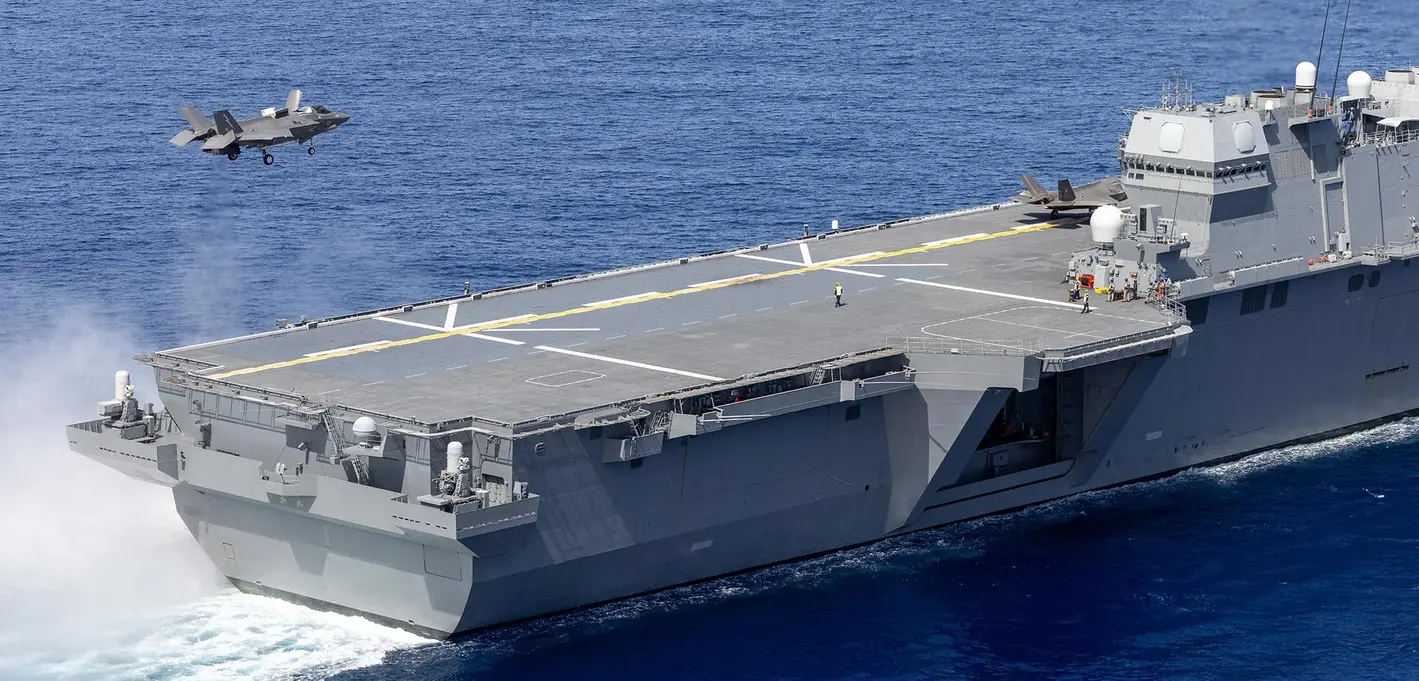T4K3.news
Historic F-35 cross-decking milestone
The UK and Japan complete a landmark cross deck exercise in the Philippine Sea, signaling deeper defense cooperation and interoperability.

The Philippine Sea exercise marks a milestone in allied carrier aviation as UK and Japanese jets operate from each other’s ships.
Historic F-35 cross-decking between Royal Navy and Japanese Maritime Self-Defence Force
HMS Prince of Wales led a nine day series of joint operations in the Philippine Sea, integrating with JS Kaga and carrier groups from the United States. Eleven warships and twenty three aircraft from six nations took part in anti submarine warfare drills, coordinated air defense, and replenishment operations. Two USMC F 35Bs briefly joined Prince of Wales for deck operations, while UK and Japanese crews practiced intercepts and maritime strike with cross deck landings.
Key Takeaways
"Japan will rely on international partners to operate F-35Bs before home expertise matures"
Describes Japan's approach to expanding carrier aviation
"This cross deck evolution accelerates operational readiness"
Editorial assessment of the drill's impact on readiness
"The alliance signals a durable shift in regional security posture"
Analytical interpretation of strategic implications
This milestone shows how allied air power can be pooled across long distances. The drills advance practical interoperability and doctrine sharing between the UK, Japan and the United States, paving the way for more complex operations in the Indo Pacific. Japan’s move to fixed wing carrier operations, alongside multi service training with allies, signals a durable shift in its defense posture and a growing reliance on partners for capability development. Yet the linked effort also brings political and budget considerations, with questions about domestic support for expanded defense spending and regional risk calculations in a tense security environment.
Highlights
- Allied carriers learn to fly together and set new deterrence
- Japan gains real world F-35B experience with partners
- Cross deck drills reshape how allies train and fight
- Indo Pacific cooperation becomes a clear path for future missions
Political sensitivity and funding pressure around Indo Pacific carrier drills
The joint exercises touch on high stake regional security questions and defense budgets in multiple countries. Public reaction and policy debates could influence future funding and deployment decisions.
The drills will influence ongoing training and collaboration with Japan and other partners in the region.
Enjoyed this? Let your friends know!
Related News

Armenia signals new chance for Türkiye ties

Silent Hill f lands this September

Kelce Swift romance climbs in GQ

Thai air force bombings escalate border conflict with Cambodia

Jen Pawol earns historic MLB umpire debut

Disturbing facts prompt public reflection

Moana 2 reaches $1 billion worldwide

US debt climbs past 37 trillion
